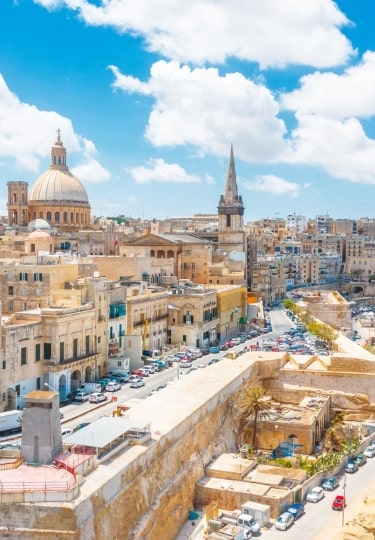Given its pocket-sized form, the answers to the question “what is Malta famous for?” are surprisingly substantial. This resplendent Mediterranean island might be best known as one of Europe’s smallest countries, but zoom in on the map and you’ll soon see that its dimensions are deceptive. Malta and little sisters Gozo and Comino pack in plenty.
Inhabited since 5,900 BC, Malta’s most important archaeological sites retain an air of mystery, adding a legendary status to UNESCO-listed megalithic monuments. Then there are the islands’ world-renowned Mediterranean credentials, the cinema-worthy coastline, ancient citadels—both of which have found further fame on the silver screen—and prominent wine production dating back to the Phoenicians.
To discover what Malta is known for, you’ll want to peel back its layers as you travel between its two main islands, stroll its history-defining landmarks, and swim in some of Europe’s clearest, warmest waters.
Valletta & The Grand Harbour
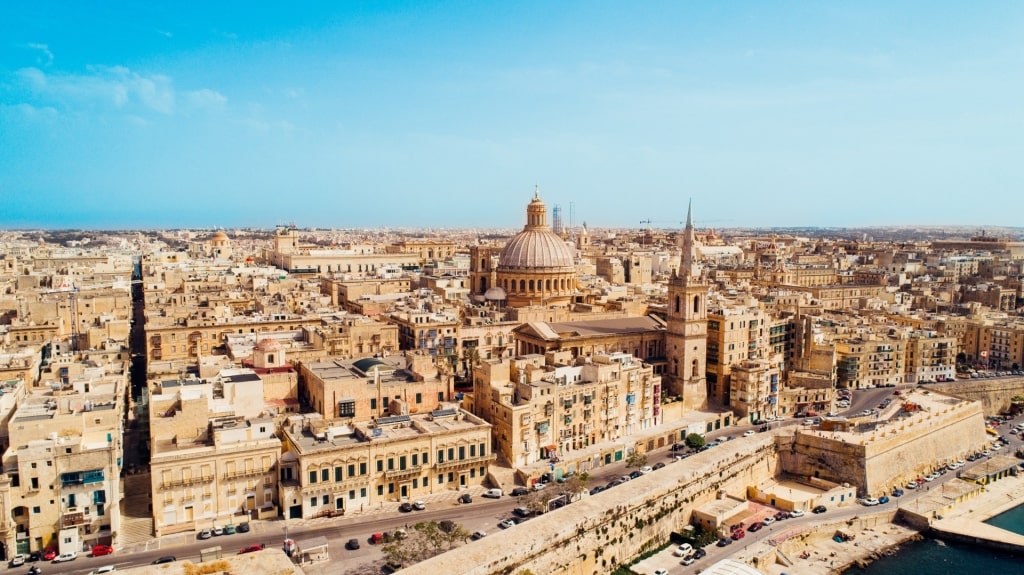
The Grand Harbour, Valletta
Perhaps more than anything, Malta is famous for its golden-hued, sea-flanked, and seriously storied capital city, Valletta.
Recognized as a UNESCO World Heritage Site since 1980, on account of the city being “one of the most concentrated historic areas in the world”, you need only take a few steps in any direction to stumble upon another of the city’s palatial complexes or 16th-century constructions. This is an impressive feat for the European Union’s smallest capital city.
Founded in 1566 by the Knights of St. John, Valletta was always destined to be an impressive and culture-stacked Renaissance city.
Still holding true centuries later, the Grandmaster’s Palace, now the residence of Malta’s president, retains the jaw-dropping frescoes that portray the Great Siege of Malta. This was when the Ottoman Empire tried and failed over four months to seize control of the island.
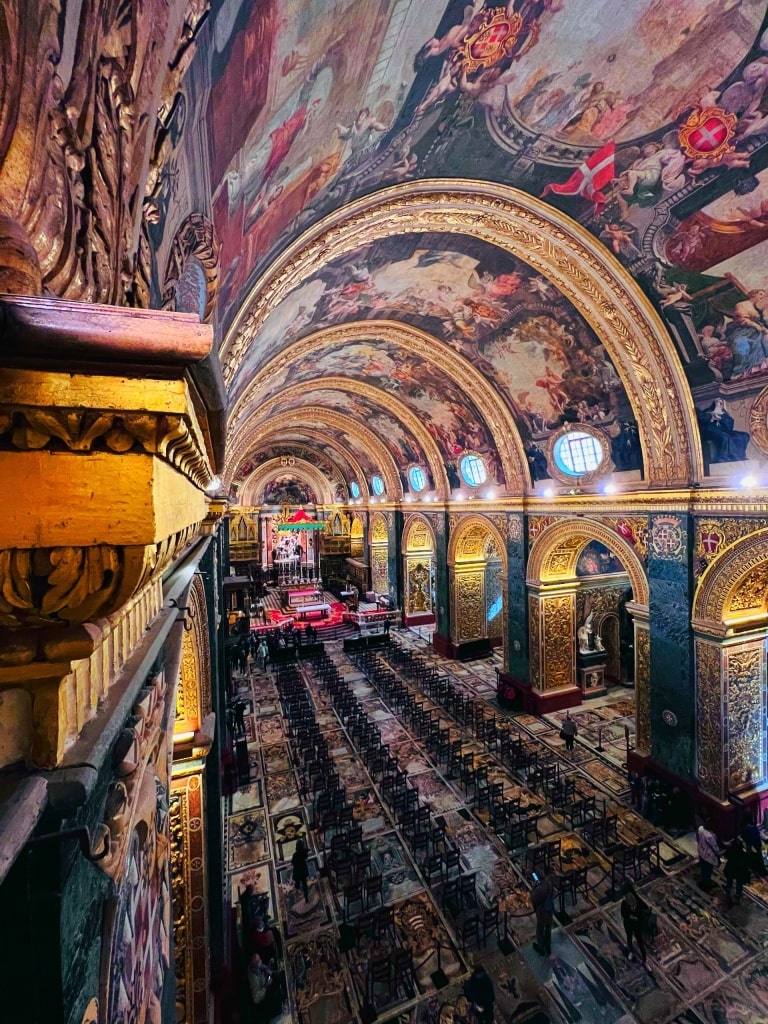
St. John’s Co-Cathedral, Valletta
Spanning out from the palace are numerous more renowned architectural achievements. Step inside the 16th-century St. John’s Co-Cathedral to witness an ornate edifice housing Caravaggio’s grisly, grand, and world-renowned painting depicting “The Beheading of St John the Baptist.”
Tour the noble rooms of the late 16th-century Casa Rocca Piccola. And admire the contemporary twist of the City Gate, now regarded as a cutting-edge reimagination of a half-a-millennium-old entranceway.
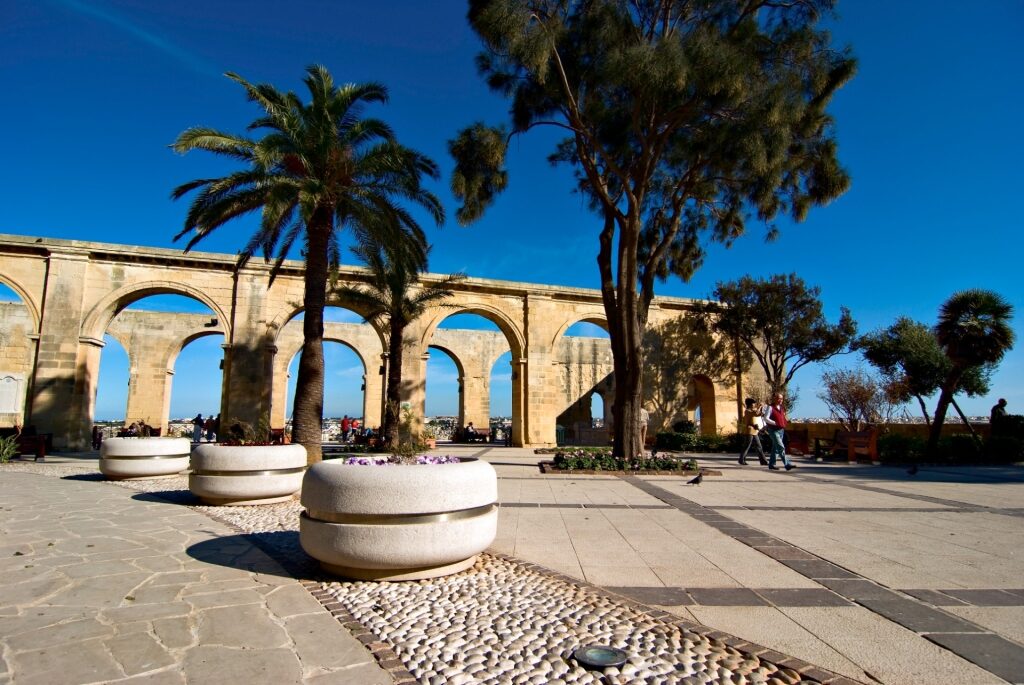
Upper Barrakka Gardens, Valletta
Equally as important are Valetta’s bastions. One of the highlights of the city walls is the Upper Barrakka Gardens, a grandiose space of archways, water features, and military might created in 1661.
Overlooking the Grand Harbour, it’s a spectacular setting worth visiting at noon to hear the firing of the cannon or to marvel at the “Three Cities” of Vittoriosa, Senglea, and Cospicua across the water.
Better still, hop on a traditional dgħajsa tal-pass taxi boat and sail across the famous harbor to see all the signature limestone buildings that make the trio of facing cities the stuff of travel legends.
Sunshine & Blissful Beaches
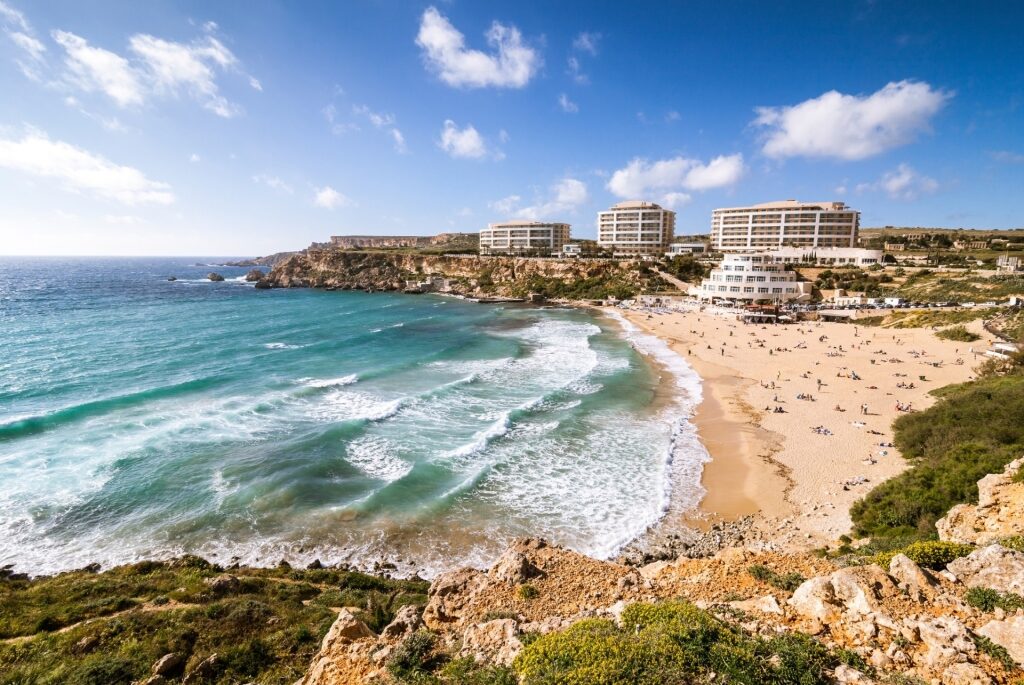
Golden Bay
Malta boasts more than 300 days of sunshine annually and its climate is a major foundation of its fame as one of the best beach destinations in Europe.
With the sun seemingly always shining, one of the most obvious answers to what is Malta known for is its tempting shoreline and transparent waters. Whether you’re seeking animated bays backed by lively bars, remote stretches ideal for coastal ambles, or want to embark on a cliff-hugging adventure by kayak, there’s a beloved beach with your name on it.
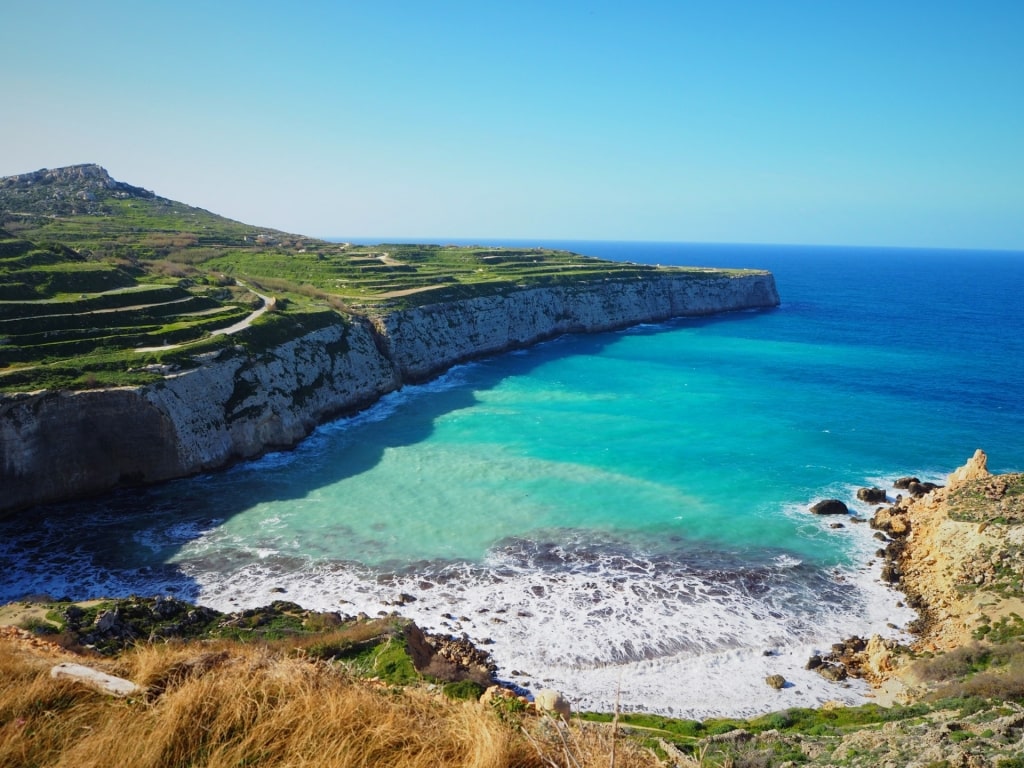
Fomm Ir-Rih
On Malta’s main island, you’ll struggle not to be seduced by the sweeping butterscotch sand at Golden Bay or the more secluded Fomm Ir-Rih, a teeny bay accessible by hiking or kayak. On Gozo, terracotta-hued Ramla Bay is regarded as one of Malta’s finest.
Yet, many would argue that Malta’s best beaches are on lesser-developed Comino Island, the smallest inhabited isle of the Maltese archipelago. Here, you’ll find some of the most crystal-clear cyan waters imaginable, and while there is a bounty of dazzling beaches, it’s the sensational Blue Lagoon that has become Malta’s most famous swimming zone.
Craggy Cliffs & a Captivating Coastline
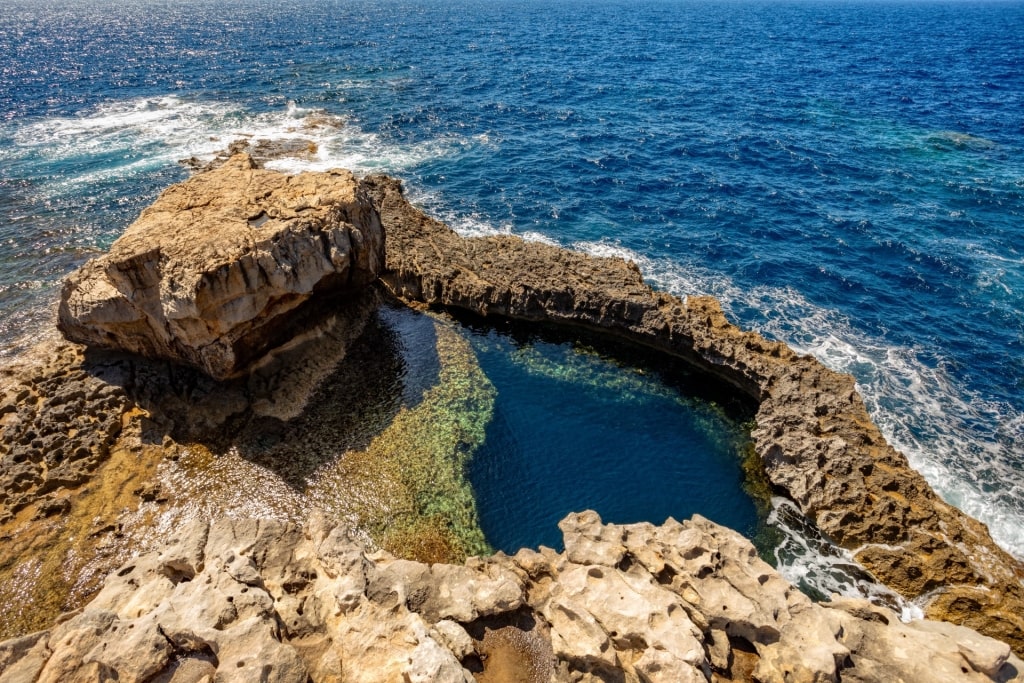
Blue Hole
The coastlines of Malta and its sleepy little sister, Gozo, are rich in fame-worthy vistas. Just north of Gozo’s Dwejra Bay, the Blue Hole, a natural rock formation that plunges to depths of 52 feet, is a popular site for scuba dives.
For less adventurous exploration, take a boat trip from the “Inland Sea” to explore the coastline, which includes an unforgettable sailing through a cavernous tunnel from the lake-like body of water to reach the open sea.
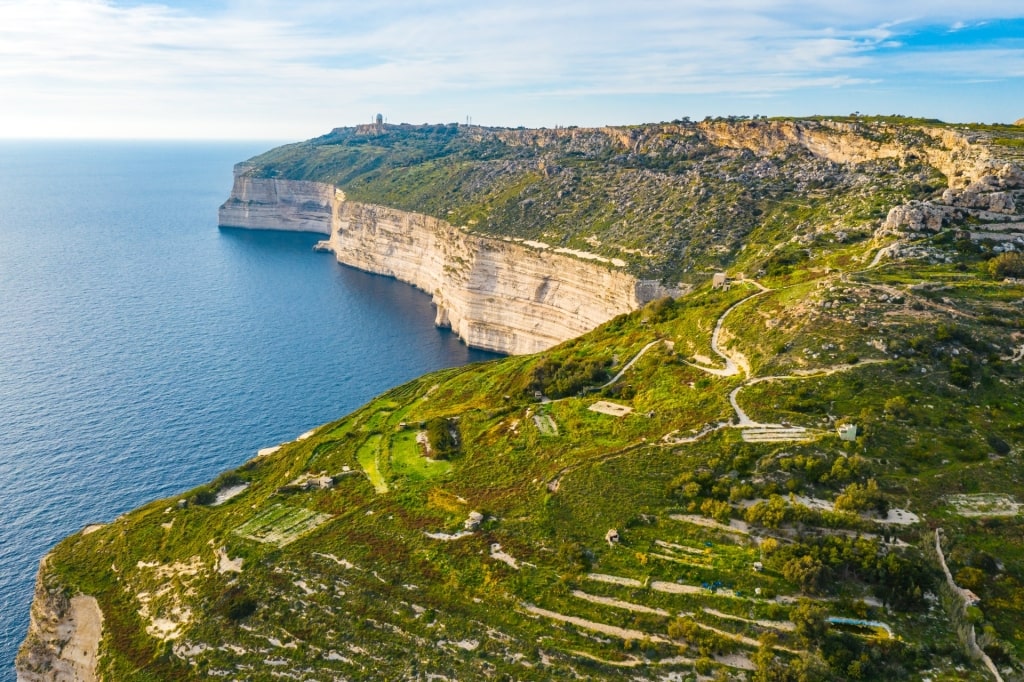
Dingli Cliffs
Not to be outdone, Malta itself has plenty of esteemed craggy coastlines of its own. Around the soaring Dingli Cliffs along the western coast, you’ll be spellbound as many before while strolling atop the weathered cliffs 830 feet above sea level.
Prefer a plunge? Venture south to St. Peter’s Pool, where ladders lead down from the limestone slab to a blissful, horseshoe-shaped sea pool, regarded as one of Malta’s superior snorkeling spots.
Cinematic Backdrops
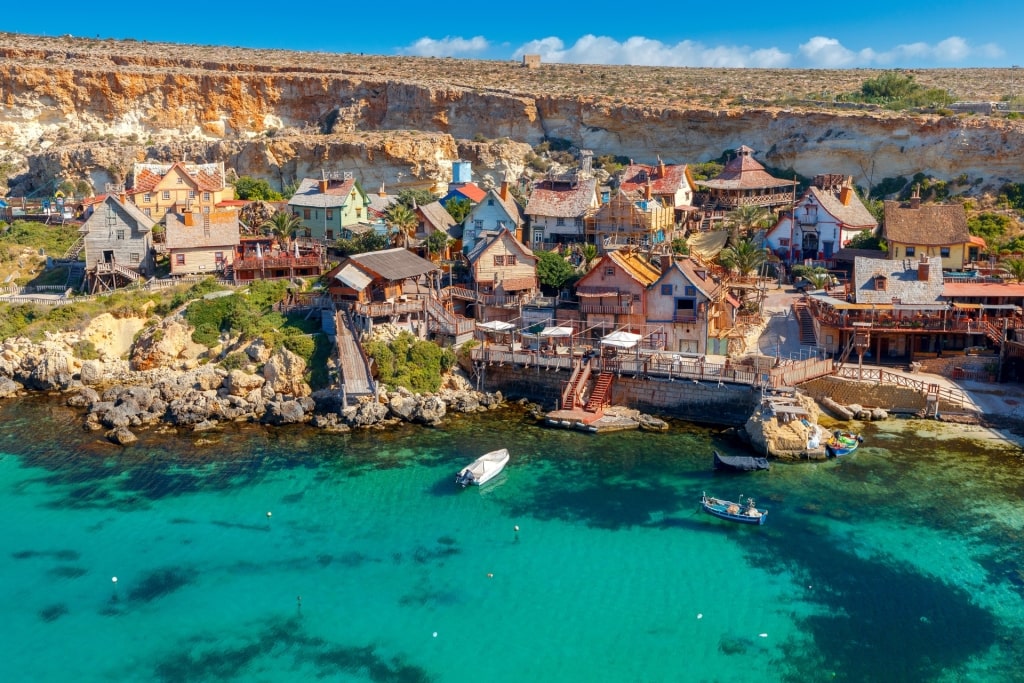
Popeye Village
Malta’s arresting landscapes and dramatic historic cities haven’t gone unnoticed by Hollywood and TV producers, and the beautiful island has become known over the last few decades for its movie star looks.
One of Malta’s most famous filming locations is Popeye Village. Constructed as a film set for the 1980s musical motion picture, the original location has since expanded and become one of the island’s most famed attractions.
Wrapped around Anchor Bay, the wooden village, stilted huts, and family-friendly entertainment are perhaps even more celebrated today than when the film was released.
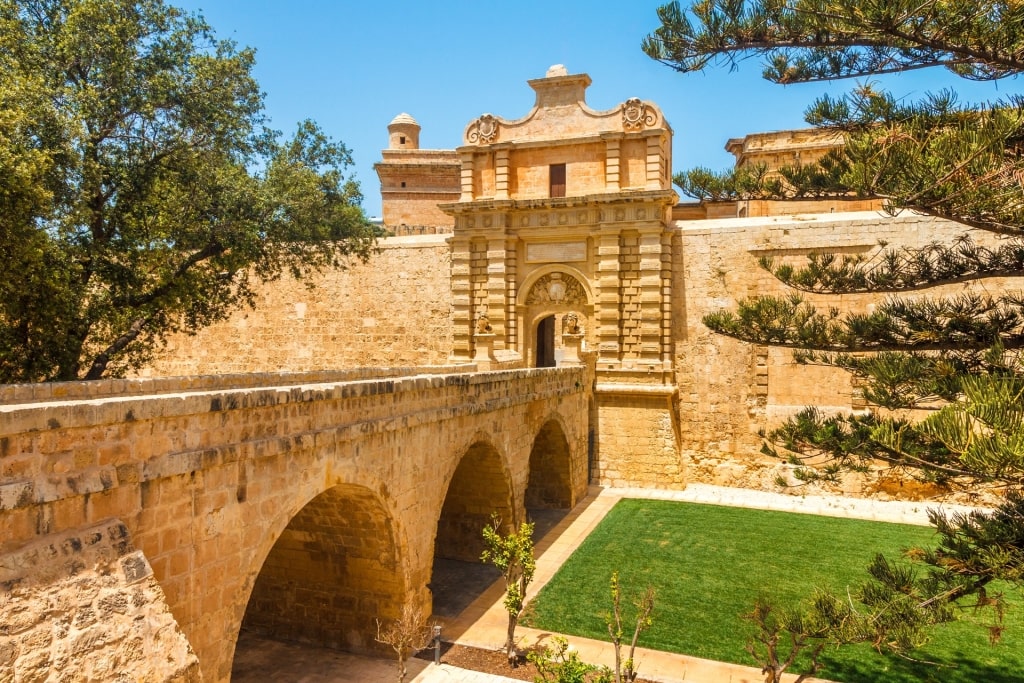
Mdina
Malta’s former capital city, the medieval city of Mdina, has also starred in multiple productions, while Valletta’s Grand Harbour has stood in as the setting for the Trojan War, which took place almost 2,000 years BC.
Mdina, Rabat, & Mosta
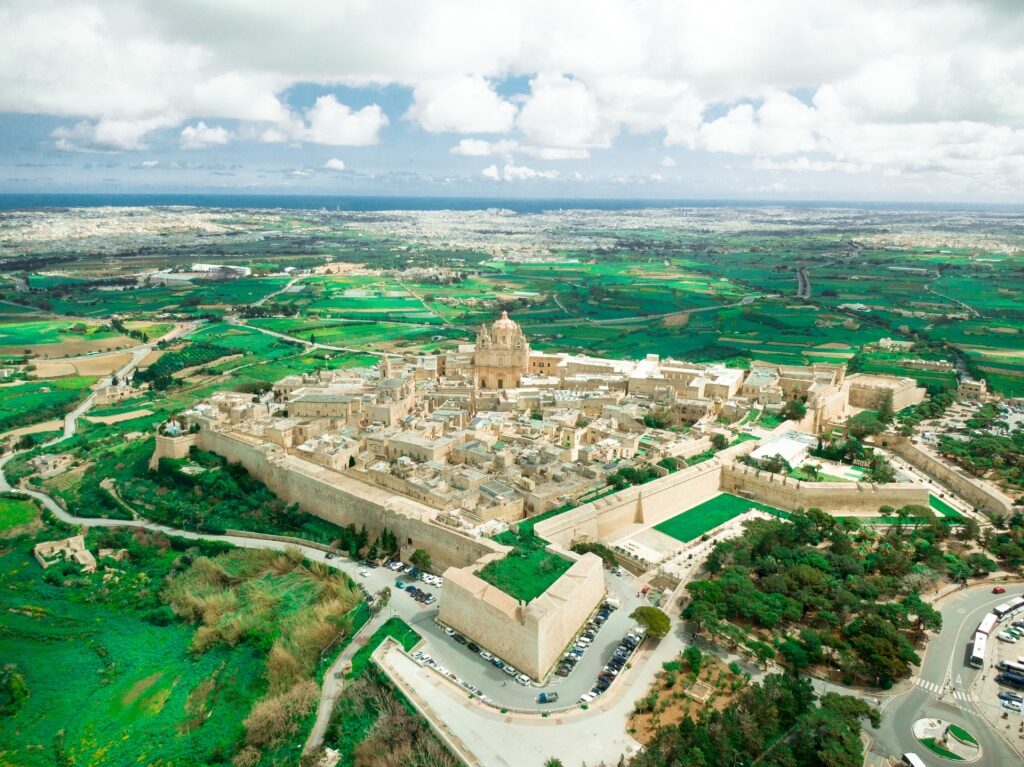
Mdina
Malta’s archaeological and architectural marvels are more than enough to steal attention from the coast. The nation’s former capital, Mdina, along with nearby Rabat and Mosta, are three of the archipelago’s most famous destinations.
Mdina citadel, affectionately known by the Maltese as the Città Silente, or Silent City, was founded around 800 BC, although evidence of a hilltop settlement dates back thousands of years.
Nowadays, the Silent City is best known for its myriad architectural styles. However, while magnificent medieval architecture can still be seen in former noble homes, such as Palazzo Falson, Mdina is today esteemed for its Baroque embellishments.
St. Paul’s Cathedral, constructed in the early 18th century, is the most striking of all, with its highly detailed frescoed ceilings and ornate stained glass windows.
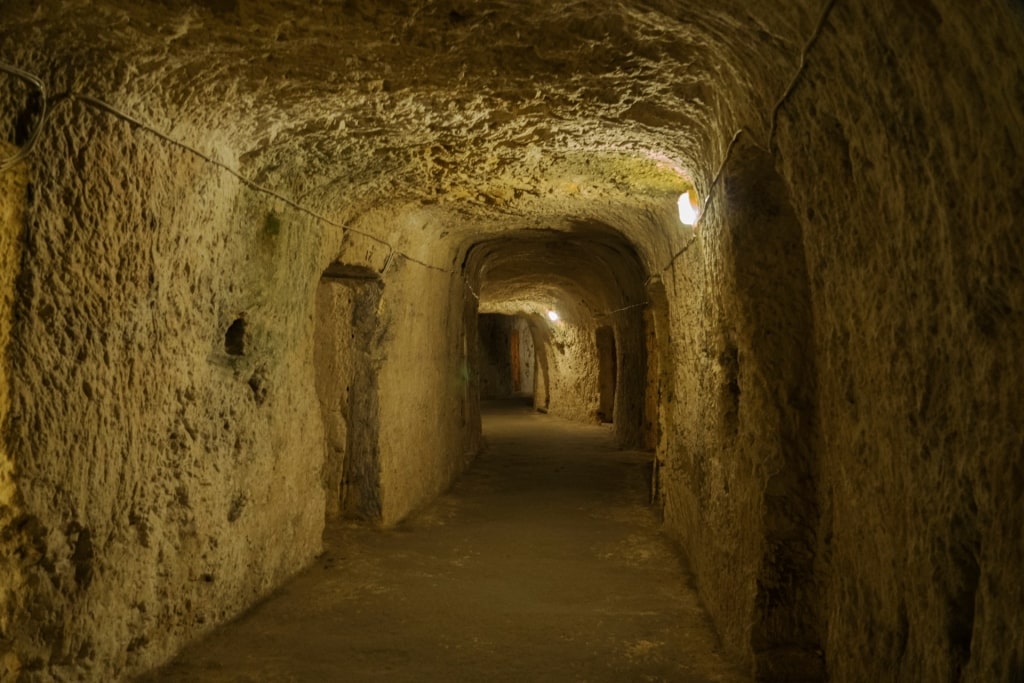
St Paul’s Catacombs, Rabat
Confusingly, the name of St. Paul—the apostle who legend says lived on the island from 60 AD after being shipwrecked—is also given to a remarkable underground burial site in nearby Rabat.
With its labyrinth of tombs, chambers, halls, and passageways, St Paul’s Catacombs are phenomenal, especially considering the earliest hypogea were likely established around 400 BC.
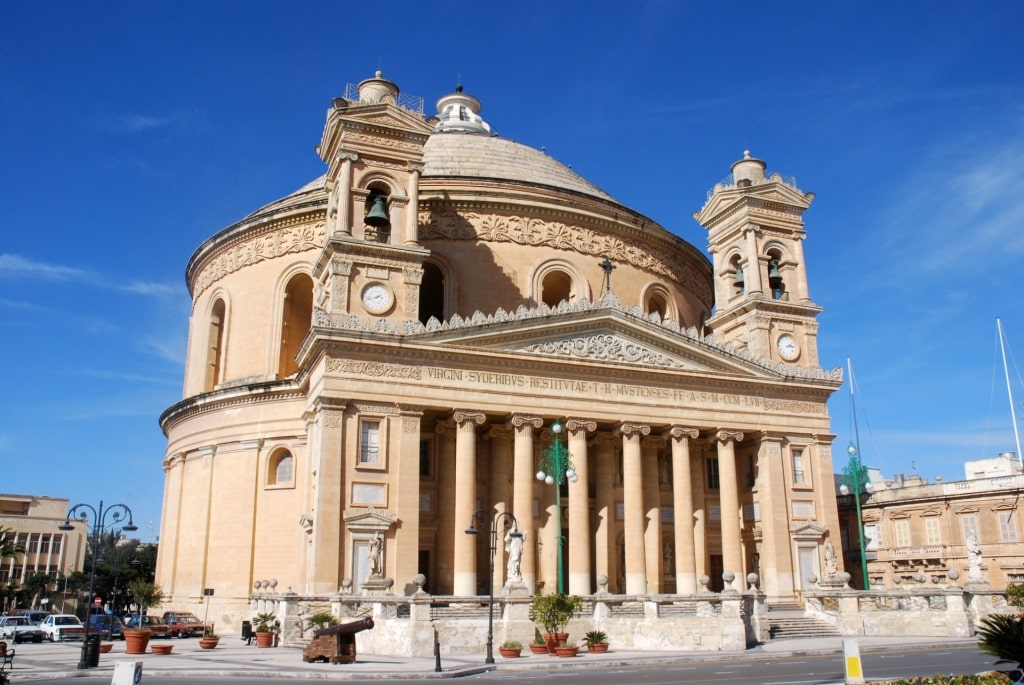
Mosta Dome, Mosta
Nearby in Mosta, you’ll encounter a small town dominated by the Basilica of Mosta’s dome, boasting a diameter of 120 feet.
Not only is the mammoth rotunda one of the world’s largest unsupported domes, but its construction around an already-established church—later destroyed following the new basilica’s completion—is one of Malta’s most impressive tales of determination.
Maltese Flavors
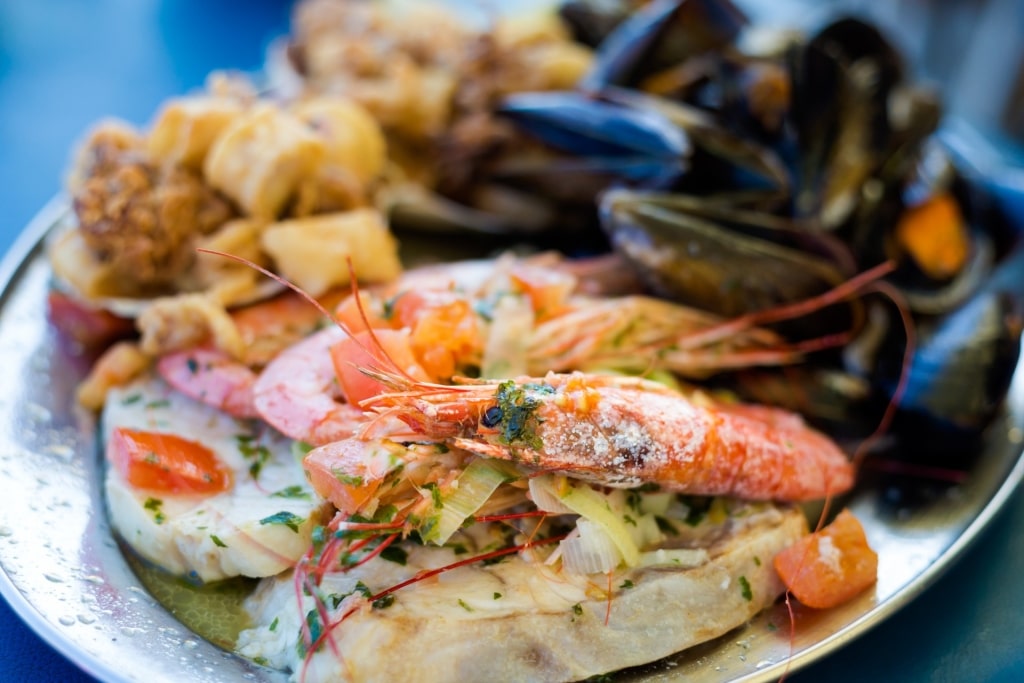
Seafood
If you’re a foodie, then you’ll certainly want to know what Malta is famous for in the kitchen. Lapped by the Mediterranean Sea and its bountiful catch, much of the menu is focused around freshly grilled fish, stuffed squid, the island’s signature torta tal-lampuki, Lampuki Pie, and aljotta, a tomato and fish soup seasoned with garlic, mint, and onions.
For a taste of the island’s most famous flavors, start your gastronomic tour at Is-Suq Tal-Belt, Valletta’s vast food market. While there are still a few fresh produce stalls, the venue is now more of a food court and alongside international flavors, Maltese cuisine is spotlighted.

Imqaret
Local street food, such as Gozitan ftira, a traditional sourdough flatbread topped with cheese, anchovies, or olives, and imqaret, date-stuffed spiced pastries, are excellent snacks to eat on the go.
To sample more of Malta’s most celebrated recipes, settle in for a more formal lunch. Some of the most typical dishes include kapunata, a sweet and sour vegetable stew, bragioli, small minced beef balls wrapped in thin steak, and fenek, a hearty slow-cooked rabbit stew.
Ancient Temples & Megalithic Mysteries
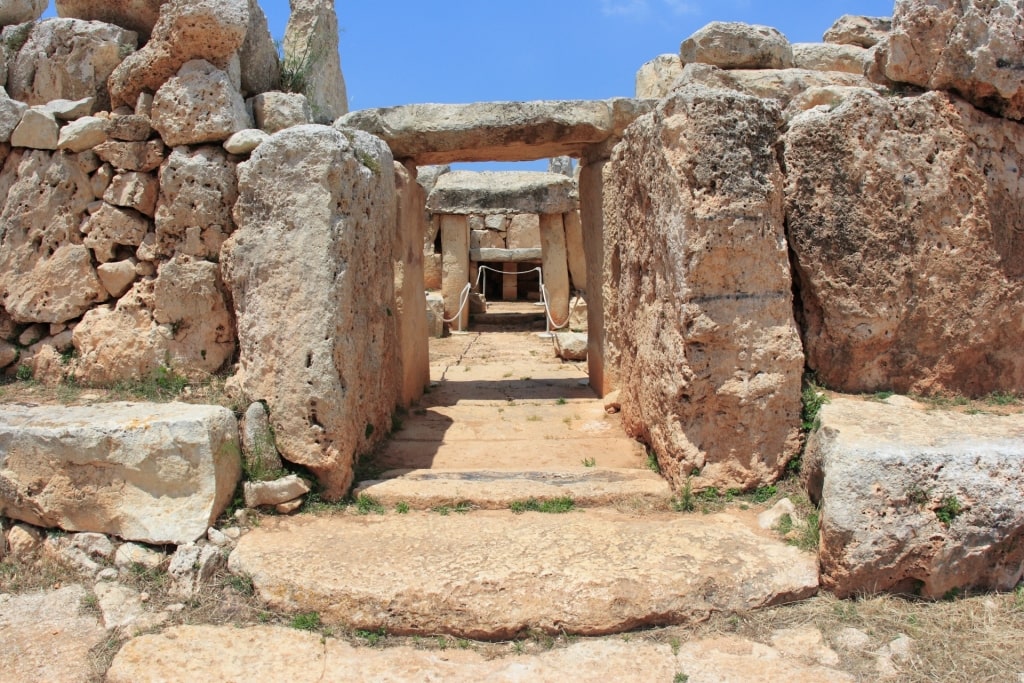
Hagar Qim
Archaeologists might have the most fervent answer when you enquire what is Malta known for. This Mediterranean island is one of the cradles of civilization.
Boasting some of the oldest megalithic sites on the planet, Malta’s reputation as a land of legends, mysteries, significantly important temples, and archaeologically advanced and fascinating finds is unquestionable.
Two of Malta’s three UNESCO World Heritage Site listings are focused on the prehistoric. The first, the Megalithic Temples of Malta, are a grouping of seven sacred complexes, Bronze Age structures, and almost unbelievable constructions.
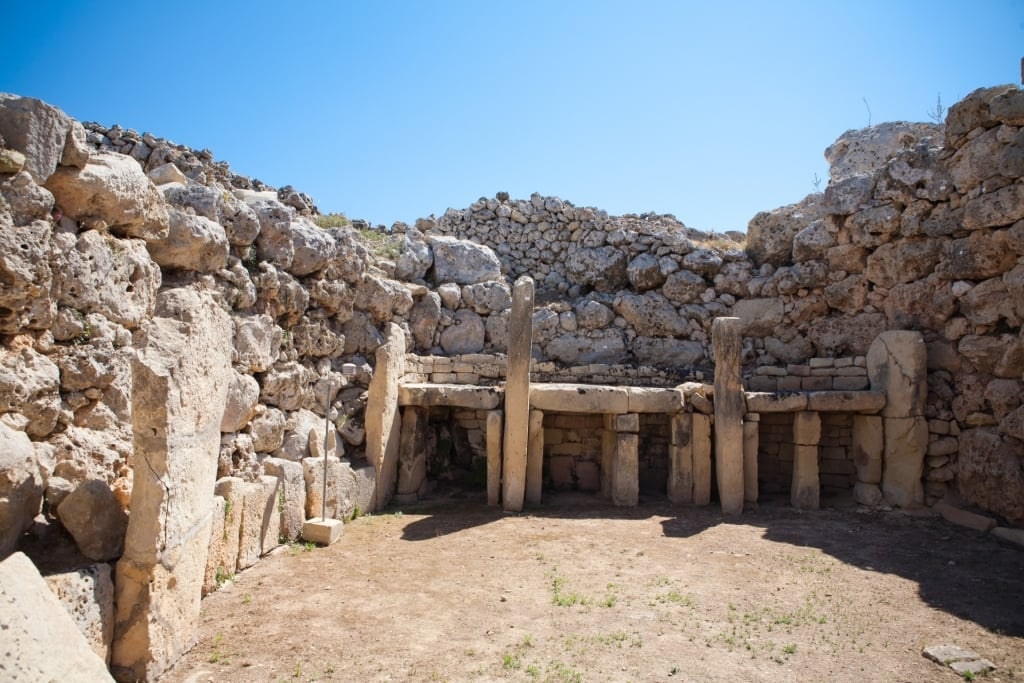
Hagar Qim
On Malta’s main island, the most famous temple is Hagar Qim, constructed more than 5,000 years ago. Impressive not only for its scale and preservation, the advanced and technical layout of the structure, with links to astronomy and quality craftsmanship, is outstanding.
Over on Gozo, the Ġgantija Temples, constructed in 3,600 BC, are celebrated for being one of the world’s first free-standing structures.
Malta’s second prehistoric UNESCO site is the subterranean Ħal Saflieni Hypogeum. An equally enthralling archaeological site, this underground cemetery has been in use since around 4,000 BC and contains Malta’s only prehistoric wall paintings.
Marsaxlokk Fishing Village
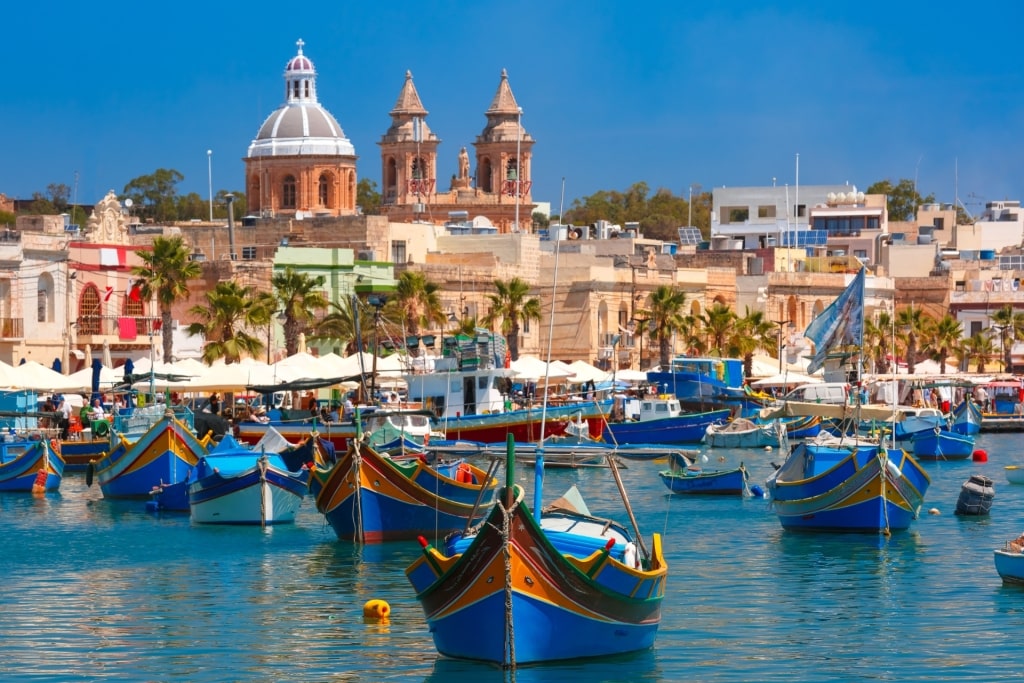
Marsaxlokk
Long before travelers and their beach towels arrived, Malta’s bays were decked out with fishing boats rather than bars.
For centuries, seafaring stories and fishing defined the islands no matter who was currently conquering this corner of the Mediterranean, all adding to its illustrious maritime status.
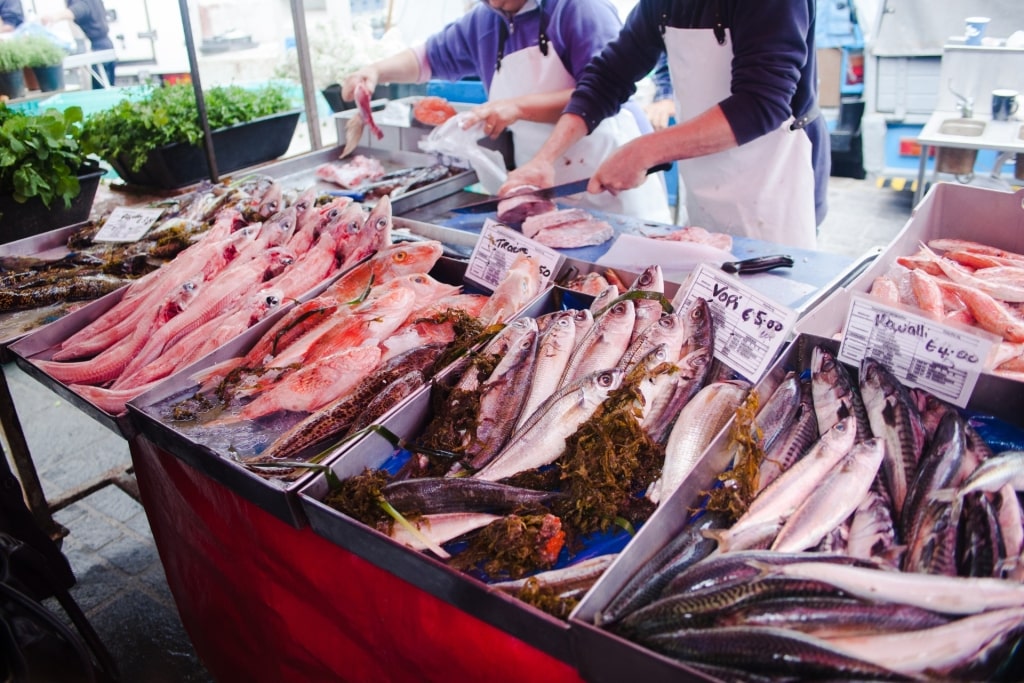
Fish market in Marsaxlokk
While much has changed, one of the prettiest villages, Marsaxlokk, retains its strong ties to the sea. The local love for Lampuki, the Maltese name for mahi-mahi, shines strongest. The fish is caught and gleefully eaten between August and December.
Better than the catch? The panorama of this seaside village. Pretty fishing boats bob in the fetching harbor, their sapphire blue and canary yellow paint dancing in the sun. A wide promenade wraps around the harbor, with restaurants offering the freshest fish al fresco. And behind, the dome and towers of Madonna ta’ Pompei church complete the postcard-worthy picture.
Wreck Diving
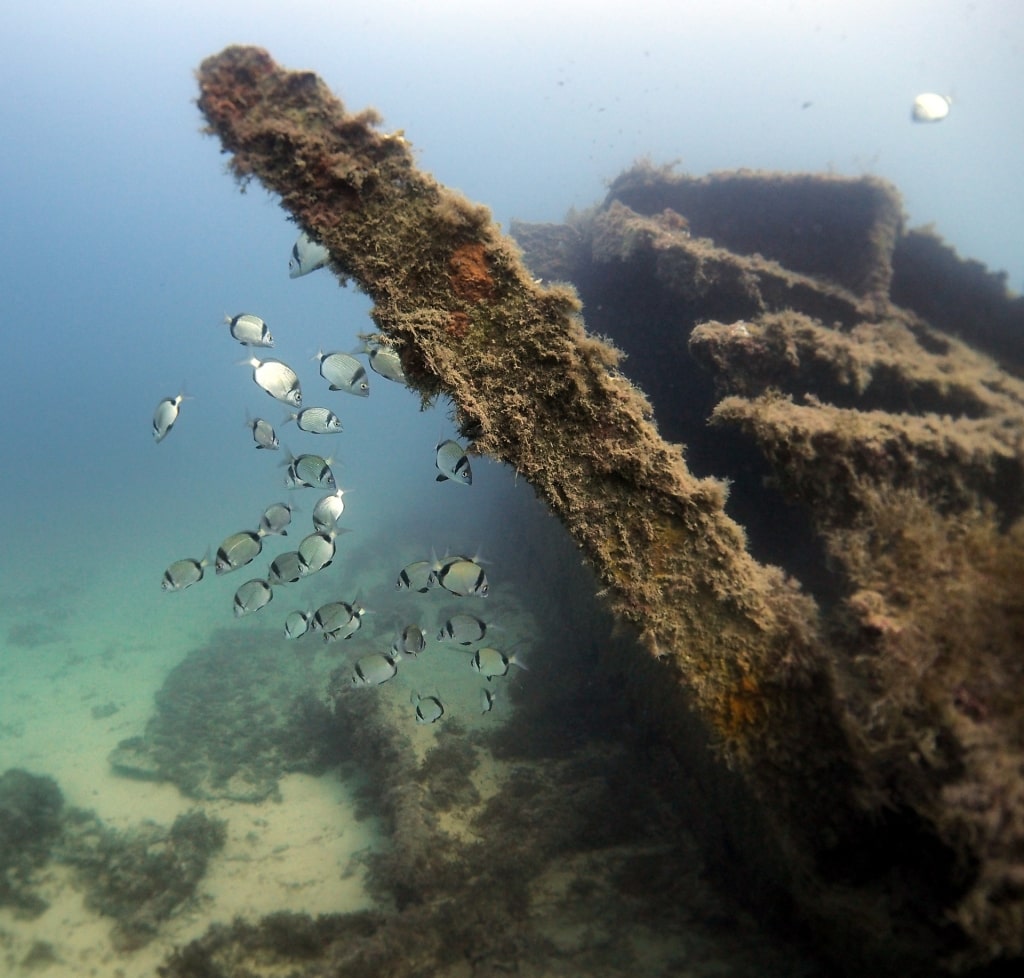
HMS Maori
Ask a scuba diver what is Malta known for and they’ll go starry-eyed at the thought of sunken shipwrecks. The coastline around the archipelago has been long established as a hotbed of diving activity thanks to the many unique vessels and craft resting on the seabed
Adding to Malta’s allure as one of Europe’s most famous diving destinations is the reliable visibility and more hospitable water temperatures than those found further north. Malta has no rivers clouding the sea with silt and the drop-offs around the coast are home to an extraordinary variety of marine life. While many of the wrecks are at a depth most suited to advanced and specialist divers, some are well placed to be seen from above by first-time divers.
Some of the most revered sites in these wreck-strewn waters include HMS Maori, a 377-foot-long World War II destroyer, and Le Polynesien, which was torpedoed over a century ago yet remains in relatively good shape. Thanks to their shallow placements, some of the purposefully sunk vessels, including the P31 patrol boat, provide the perfect entry-level dive.
Historic Viticulture
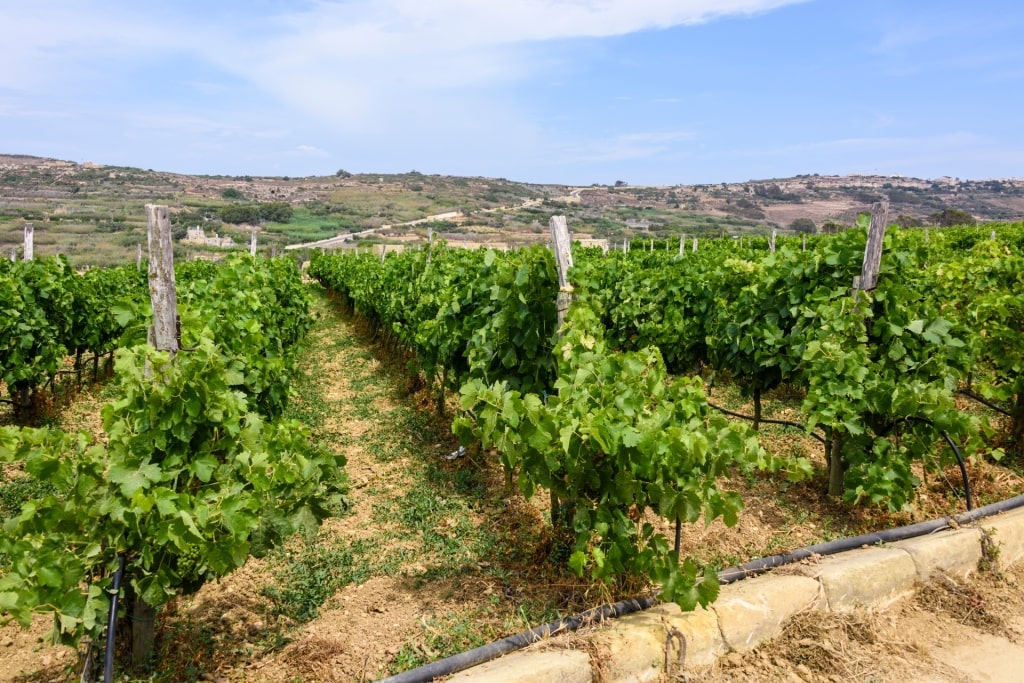
Vineyard in Gozo
Malta has been producing wine for millennia. The Phoenicians introduced viticulture to the islands, likely first on Gozo, giving the island 2,000 years to perfect its craft. As with many of its neighboring Mediterranean nations, Malta’s wine production is highly esteemed, with the small-batch nature of the diminutive country’s wine scene making it highly prized.
Slipping away to a winery is one of the best things to do in Malta for a taste of premium wines directly from the producers. Syrah, the distinctive local Merlot, and the indigenous white grape Girgentina are some of the most celebrated varietals produced here.

Maltese wine
Seek out the award-winning wines from Delicata, a fourth-generation winery that, in part, uses vines growing from the same lands that the Phoenicians initially planted.
If wine isn’t your thing, fear not. The Maltese are equally famous for their love of specialist and hyper-local liqueurs. Lumincetta, a citrus liqueur laced with lemon, is a refreshing after-dinner drink, while other fruit flavors can be enjoyed by ordering a Bajtra, distilled with prickly pears, and the more carob-heavy and herbal mix of Hanini.
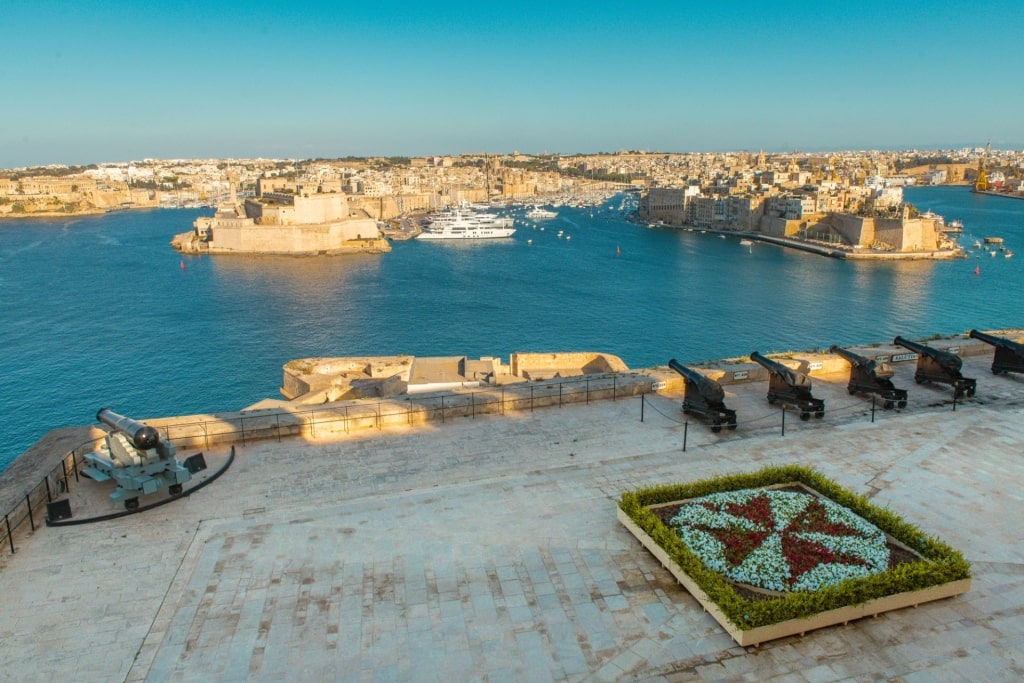
Valletta
Ready to discover what Malta is famous for in person? Browse Celebrity’s cruises to Malta and start planning your next idyllic Mediterranean vacation.
